I think a lot of people, even in the U.S., may not have heard of Steven Zierk before this week. He made some waves when he upset GM Loek Van Wely last year in Reno, and he played on the San Francisco Mechanics team in the U.S. Chess League for the last couple of years. But now the 17-year-old has stepped out on an international stage by winning the world under-18 championship in Greece!
The performance gave Zierk an automatic IM title, as well as a Grandmaster norm. This is the second time in three years that the world under-18 champion has come from the San Francisco area, as IM Sam Shankland pulled off the same feat in 2008.
This gives me an occasion to show you my first game against Steven. When I played this game three years ago, it was intensely embarrassing — probably one of the two most embarrassing games I have played in the last ten years. At the time, I didn’t know that my opponent would be a world champion and an International Master within three years. All I knew was that I had blown the game in the most humiliating fashion against some 14-year-old expert.
Well, time has a way of putting things in a different light, doesn’t it?
While this game may not be the best example of Zierk’s talent, one thing that I think he does show very nicely is the art of saving a lost game. The game exemplifies what GM Jonathan Rowson calls the principle of “infinite resistance.” Just because your position is objectively losing, it doesn’t mean you have to go down easy. You just have to play the most challenging moves, every move, move after move, no matter how long the game takes. That’s why your resistance is infinite.
The other thing that was very instructive about the game is how calmly and quickly Zierk played. He didn’t waste time feeling bad about the position. He just kept pumping out the moves, taking less than a minute per move and amassing a huge time advantage. If you watched our body language, you would think that Steven was winning and I was losing. And that, eventually, is what transpired.
Was this a foretaste of his world championship tournament, where he trailed for 10 rounds but kept on fighting and finally surged into the lead on the last day? Who knows. All I know is that he has remarkable patience for a player his age.
Dana Mackenzie — Steven Zierk
2007 CalChess Labor Day Classic
1. e4 c5 2. f4 g6 3. d3 Nc6 4. Be3 Bg7 5. c3 d6 6. Nd2 Nf6 7. Be2 …
This is a setup I have played a lot of times over the last few years. Against Dragon-type players, you can almost be guaranteed of reaching this position. Black has to decide whether to castle into what looks like a dangerous attack (7. … O-O 8. g4). Zierk decides not to risk it.
7. … Bd7 8. g4 …
Because Black hasn’t castled yet, this move might be premature, but at least it’s interesting.
8. … h5 9. g5 Ng4 10. Nf1 Nxe3 11. Nxe3 e5?!
Maybe not the best plan here. Zierk is seduced by the possibility of winning a pawn, but he gives up the d5 square to my knight.
12. h4 exf4 13. Nd5 Be5?!
Making things worse. I think Black is still okay after 13. … Ne5.
14. Nf3 Ne7
15. Nxe5! …
Is this what Steven overlooked? Or did he miscalculate the following exchanges? I’m not sure. Anyway, if he plays 15. … de then 16. Nxf6+ is very unpleasant. For example, after 16. … Kf8 17. d4! cd 18. cd ed 19. Qxd4 with a very dangerous attack for White. Instead, Steven decides to give up a piece for two pawns, with at first very little other compensation.
15. … Nxd5 16. Nxd7 Nxc3 17. Nf6+ Qxf6 18. gxf6 Nxd1 19. Bxd1 …
Psychologically this is a very interesting point in the game. My idea was to put my bishop on b3, preventing Black from playing … Ke6 and winning my pawn on f6. It’s all very logical, and I would probably play that way again. But this is the precise moment where my approach shifted from attacking to just holding on to the advantage I already have. The alternative would be 19. Rxd1, followed by 20. d4.
19. … Kd7 20. Bb3 …
What could possibly go wrong for White? He has a bishop for two pawns, and Black’s f4 and f7 pawns look just as vulnerable as White’s f6 pawn.
20. … g5!
Black takes charge. No defending the f7 pawn with a lame move like 20. … Raf8. Whatever it takes, he is going to fight for the initiative. Infinite resistance.
21. hxg5 Rag8 22. O-O-O? …
If Black is going to let you take a pawn, then take it! After 22. Bxf7 Rxg5 23. Kf2 Rh6 24. Rag1, and Black’s threats dry up fast. You can really see the psychology at work here. I’m trying to play it super safe, avoiding any risks. Meanwhile, Steven doesn’t mind mixing things up, because he has nothing to lose.
22. … Rxg5 23. Rdf1 h4
All of a sudden, it dawns on me that Black is getting serious threats. If I let his pawn get to h2 and his rook to g1, I could lose. This (plus time trouble — the first time control is at move 30) throws me into a panic.
24. Rh3? …
Again, the correct move is to take the material and run. 24. Rxf4! h3 25. R4f1! h2 26. Bxf7! and Black has no way to get his rook to g1. (If 26. … Rg2, 27. Bh4! with the idea of Bf3 is nasty.) Or if 25. … Ke8 26. Rh2 followed by R1h1, and Black cannot break the blockade of the h-pawn. But all of this takes calm nerves and careful calculation. Steven was the one who was calm in this position, and I was not.
24. … Rg3 25. Bd1 Ke6 26. Rxf4 Rxh3 27. Bg4+Ke5 28. Rf5+ Kd4 29. Bxh3 Kxd3 30. Rf1 Kxe4
Whew! We’ve passed the time control, and now I have time to think again. White is still a piece up for two pawns, but now the win — if there even is one — is ten times harder than before. The f6 pawn has gone from being a threat to being a cripple. Meanwhile, Black’s passed pawns are armed and dangerous.
Later Steven would become a great endgame player. In this endgame he let me outplay him for a long time, but the time that it cost me was fatal.
31. Bg2+ Ke5 32. Bxb7 d5 33. Re1+Kd6 34. Rd1 Rh5 35. Bc8 h3?!
I think 35. … Ke5 would have been better here. Even in the endgame, active pieces are more important than pawns!
36. Bg4 Rh4 37. Bf3 d4 38. Kd2 Rf4?!
And here I think that 38. … c4 would be more accurate. But it doesn’t really matter. The main thing is that Steven moves quickly and keeps the pressure on me. I’m the one who has to find a way to win. He just has to keep fighting.
39. Ke2 Rxf6 40. Kf2 Rh6 41. Kg3 a5 42. b3 f6 43. Bg4 h2 44. Bh3 Rh7 45. Kxh2 a4 46. Kg3 axb3 47. axb3 Rb7 48. Rd3 Ke5 49. Rf3 Ke4 50. Bf1 Kd5 51. Kf4 Rh7 52. Bc4+Kd6
Finally, after all this time, I felt as if I was back on solid ground on the chess board. Unfortunately, the clock was a completely different story! I now had less than five minutes left for the rest of the game, and I did not know if that would be enough to allow me to win.
53. Kf5 Rh6 54. Rg3 Rh2 55. Kxf6 Rf2+ 56. Kg5 Kc6!
This move surprised me. I had been sure that Steven would try 56… Ke5. For the first time all game, it seemed to me as if he was finally agreeing to go down without a fight. However, he has an insidious idea that I completely failed to see: … Kb6-a5-b4, and all of a sudden White has to be really careful not to allow a winning exchange sacrifice.
57. Kg4? …
Completely missing the point. I had to play 57. Rg1!, which keeps Black’s king at bay. After 57. … Kb6 58. Ra1 followed by Ra6+, or if 57. … Kd6 58. Re1 followed by Re6+. In either case Black’s king is chased back to the second rank. After locking Black’s king up in a cage, then White can think about freeing his own king.
57… Kb6 58. Rf3 Rg2+ 59. Kf4 Ka5
At this point I stopped writing down moves because the time pressure was too severe. The win is probably gone now, but of course White shouldn’t lose. Nevertheless, I did manage to lose on time after a frantic time scramble. (I don’t remember whether we were using a time-delay clock, probably not.)
0-1
The psychologically stronger player clearly won this game, even though he was 14 years old and I was 48. As my wife says, “Age is just a number.”
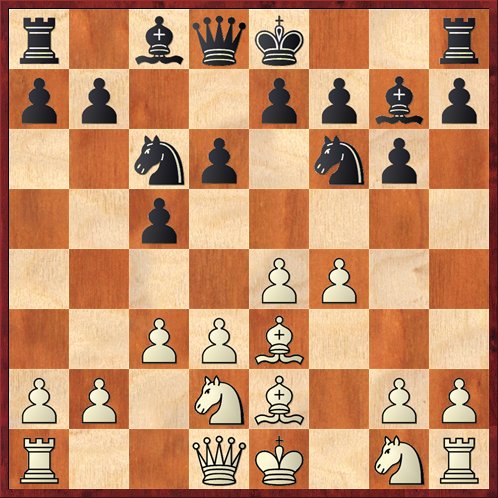

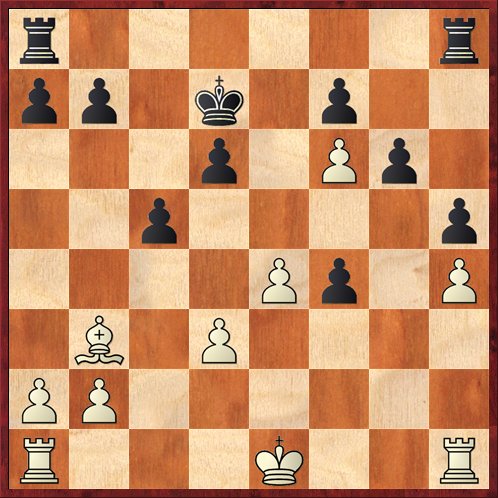

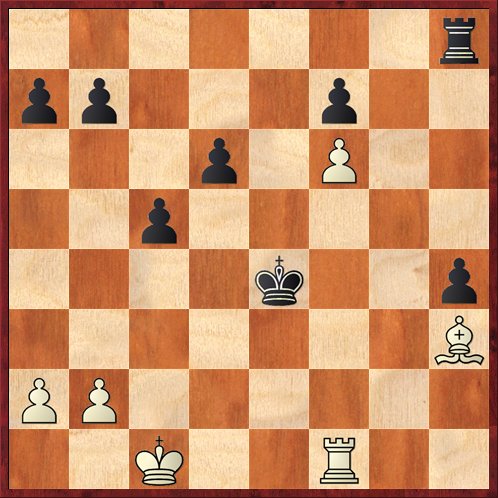
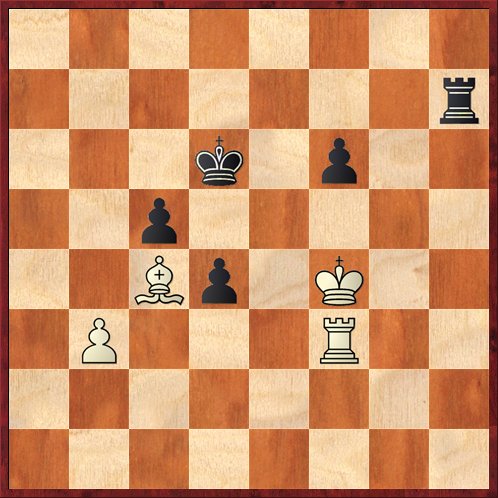
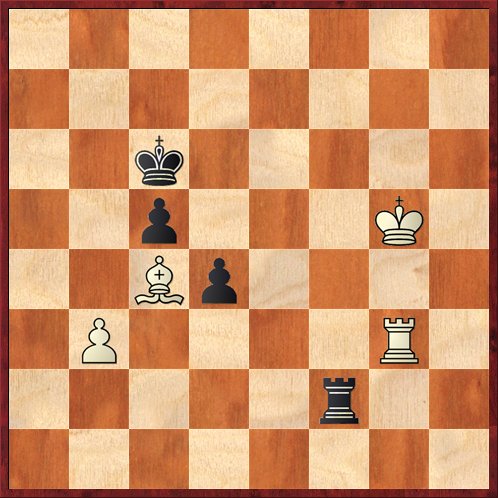



{ 1 comment… read it below or add one }
Interesting game! If you’re interested in having a pgn viewer on your blog, experiment with this: Copy and paste this code into your blog post, adding the pgn file as text before the “[/pgn]”
[pgn initialHalfmove=0 autoplayMode=none]
[/pgn]
{ 2 trackbacks }